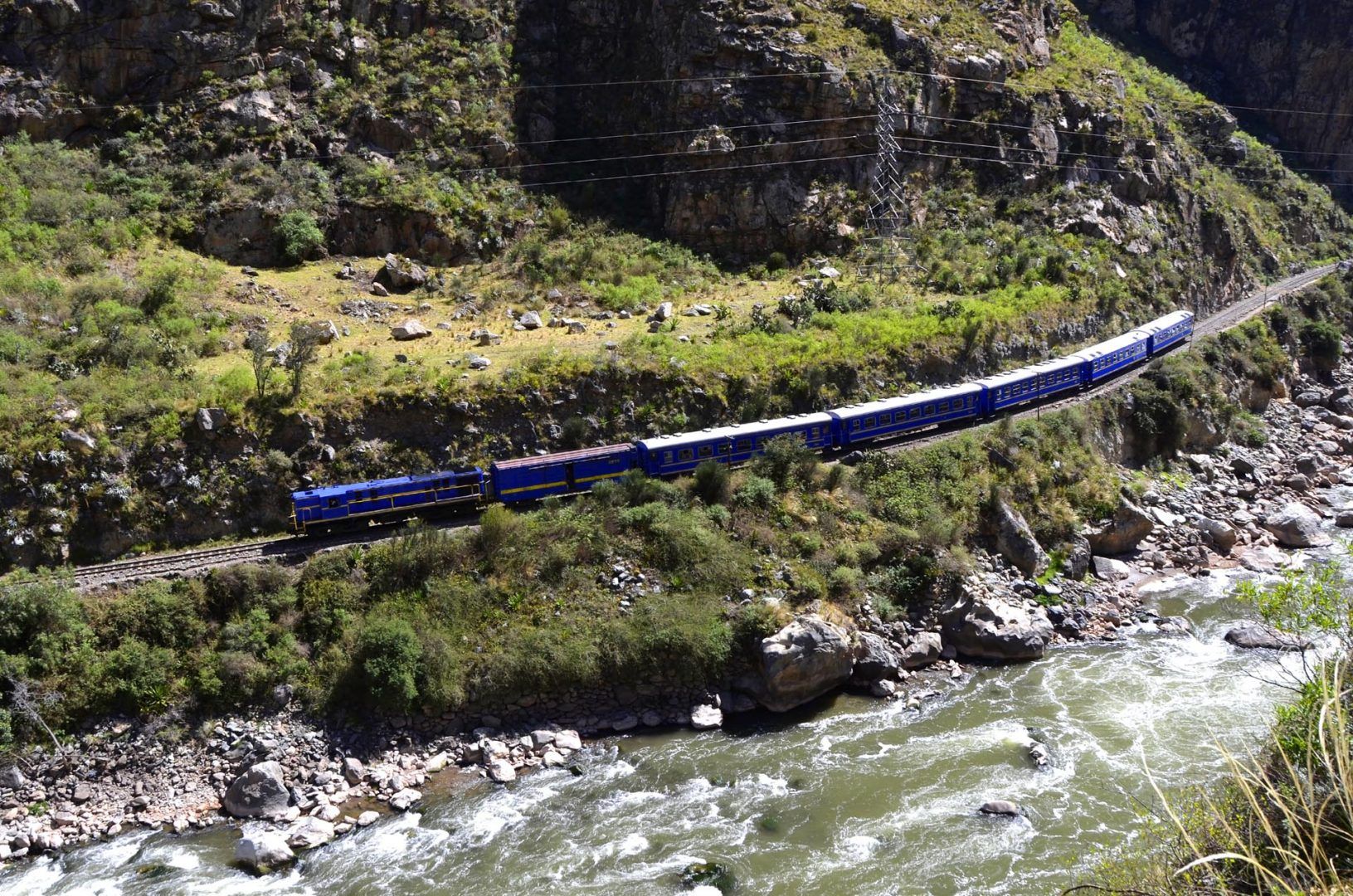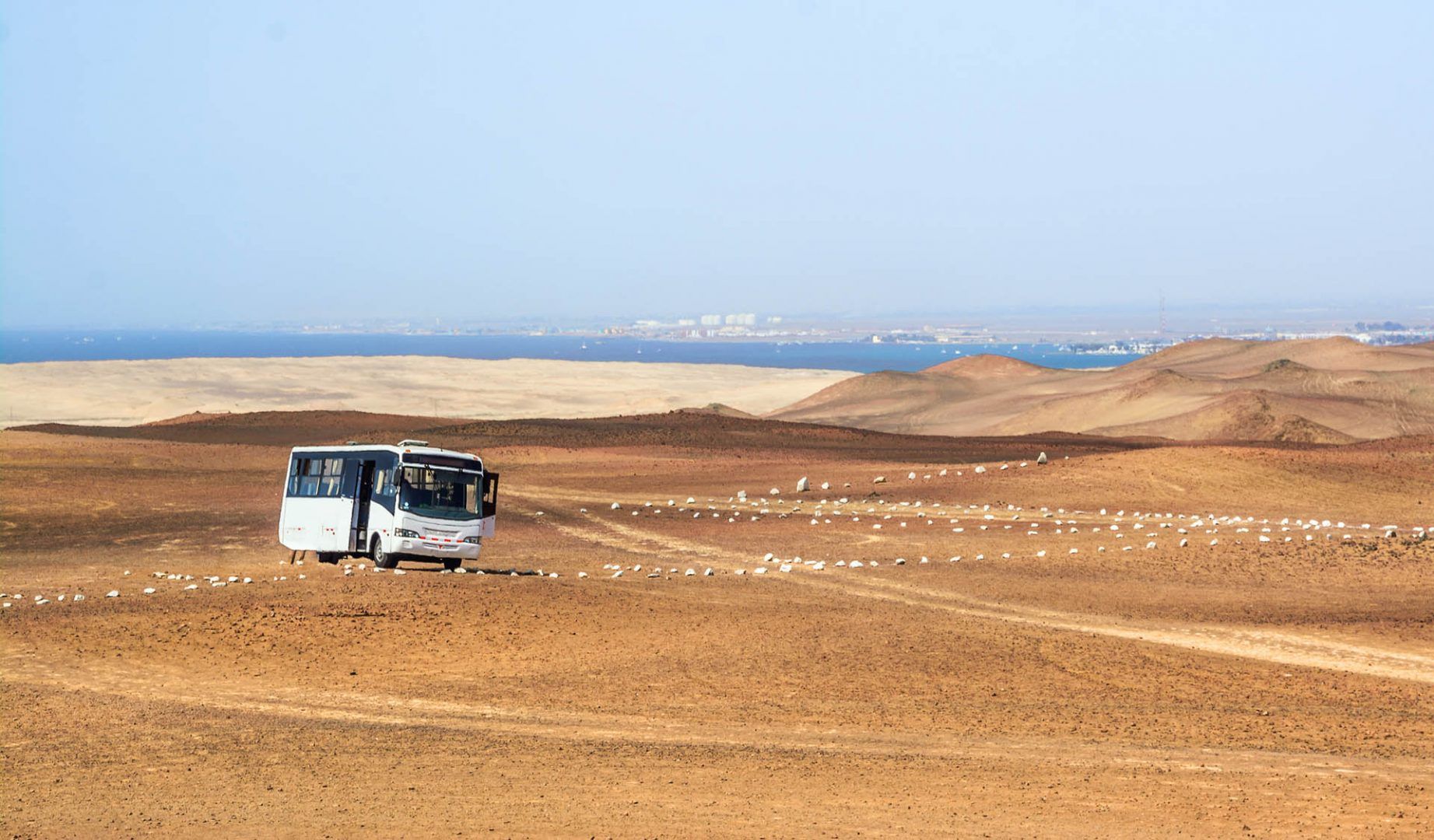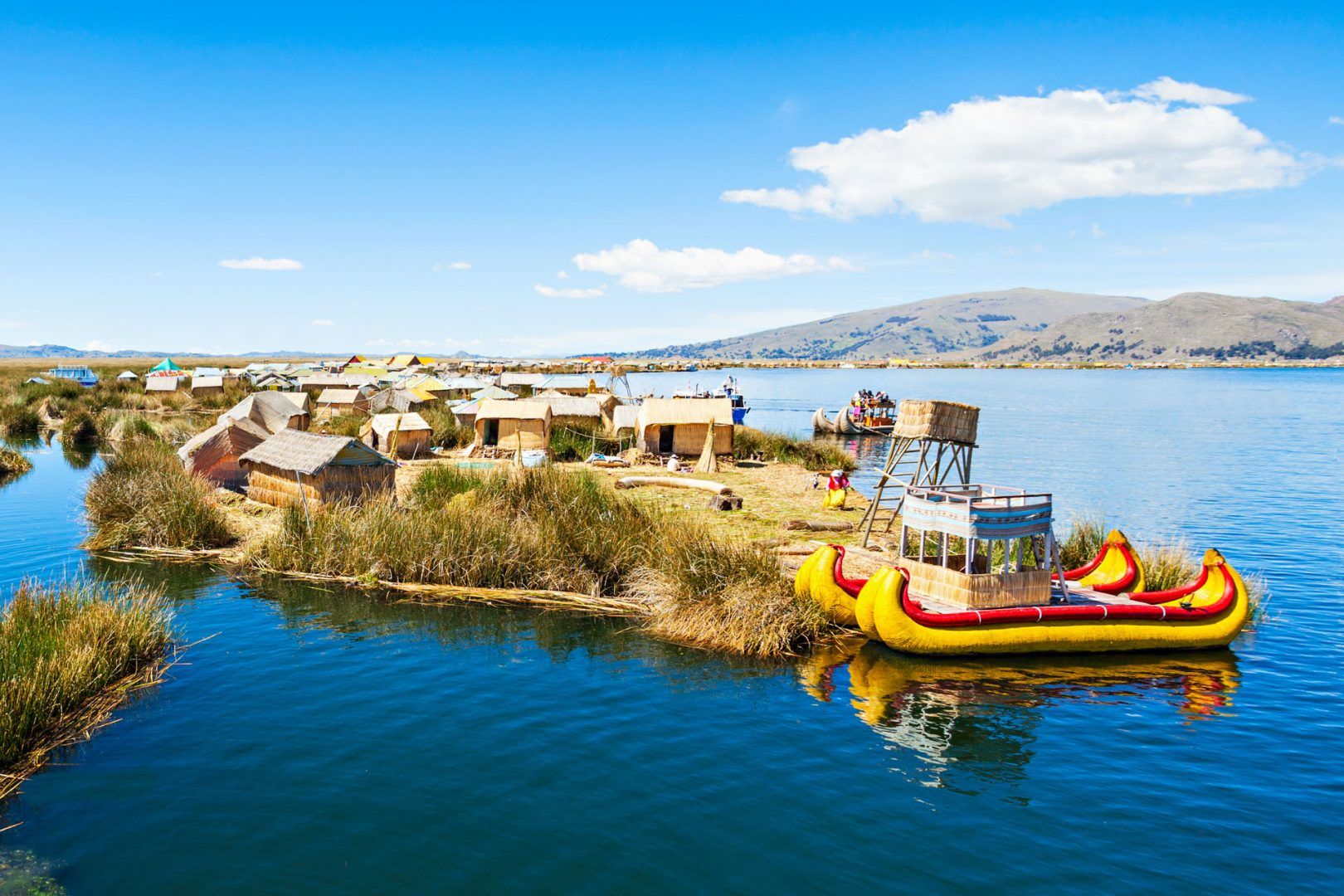Travel advice for Peru
From travel safety to visa requirements, discover the best tips for visiting Peru
If you're planning a trip to Peru, flying is the fastest and most efficient way to cover the country’s vast distances. Almost all major cities are within a two-hour flight from Lima, making domestic flights the best option for long-distance travel.
For those coming from elsewhere in South America, overland travel is an option, but keep in mind that bus journeys can be long and tiring, especially through the Andes. While Peru’s bus network is extensive, flying saves you time — especially if you’re trying to pack multiple regions into one trip.
But there are also several other types of public transport in Peru. Most Peruvians, and many visitors get around the country by bus, a cheap way to travel with routes to almost everywhere.
Peru’s spectacular train journeys are in themselves a major attraction. You should aim to take at least one long-distance train ride during your trip, especially as the trains connect some of Peru’s major tourist sights. The trains move slowly, giving you plenty of time to look at the striking scenery.
If you’re looking into how to travel around Peru by car, driving is generally not a problem outside of Lima, and allows you to see some out-of-the-way places that you might otherwise miss. However, road traffic in Lima is abominable, both in terms of its recklessness and the sheer volume. Added to which air pollution from old and poorly maintained vehicles is a real health risk, particularly in Lima and Arequipa.
There are no coastal boat services in Peru, but in many areas – on Lake Titicaca (Lago Titicaca) and especially in the jungle regions – water is the obvious means of getting around.
In terms of efficiency, price, regularity and coverage of the country, you can’t beat the bus.
These range from the relatively luxurious to the more old and battered buses on local routes.
As the only means of transport available to most of the population, buses in Peru run with surprising regularity. And they all offer remarkably low fares. This makes it possible to travel from one end of the country to the other for under US$35 – making it one of the best options for transport in Peru.
Long-distance bus journeys cost from around S/6–7 (US$2) per hour on the fast coastal highway, and are even cheaper on the slower mountain and jungle routes.
The condition of the buses ranges from the efficient and relatively luxurious Cruz del Sur fleet that runs along the coast, to the older, more battered buses used on local runs throughout the country. Some of the better bus companies, including Cruz del Sur, offer excellent onboard facilities including sandwich bars and video entertainment. The major companies generally offer two or three levels of service, and many companies run the longer journeys by night with a bus-cama (comfortable, deeply reclining seat) option. Cruz del Sur operates an excellent website with timetables and ticket purchase option (credit cards accepted). Oltursa and Movil Tours are also reputable companies, and have services to most major destinations throughout the country.
The coastal Panamerican Highway and many of the main routes into the mountains have now been paved. On such routes services are generally punctual. On some of the rougher mountainous routes punctures, arguments over rights of way and, during the rainy season, landslides may delay the arrival time by several hours.
Peru is investing in a series of terminals to centralise the departure and arrival of all the different operators. Currently, however, you should always double-check where the bus is leaving from as some companies have their own terminals around town.
For intercity rides, it’s best to buy tickets in advance direct from the bus company offices. For local trips, you can buy tickets on the bus.
Top tip: to avoid a bone-shaking ride don’t sit over the wheels on long-distance journeys, especially if the bus is tackling mountain or jungle roads.

Train going to Machu Picchu from Cuzco in the valley with Urubamba river © tr3gin/Shutterstock
Robbery and pickpocketing are real problems in Peru and bus depots are hotspots, particularly at night. Generally thieves work in teams – often smartly dressed; one will distract you while the other makes off with your valuables.
According to the UK government website passport theft is common at bus stations and on intercity buses, and buses are sometimes held up by robbers. It also warns of bus crashes – again, especially overnight journeys, and more so in remote and mountainous areas.
It’s safest to choose one of the reputable bus companies and you should always wear a seatbelt.
When thinking about how to get around Peru you should include a long-distance rail journey during your trip, especially as the trains connect some of Peru’s major tourist sights. Yes, train travel in Peru is slow, but the trade off is ample time to observe what’s going on outside and gaze at the wonderful scenery.
The Central Railway climbs and switchbacks its way up from Lima into the Andes as far as Huancayo on the world’s highest standard-gauge tracks. It only runs about twice a month between April and September.
There are two rail companies operating out of Cusco. PeruRail offers passenger services inland from Puno on Lago Titicaca north to Cusco, from where another line heads out down the magnificent Urubamba Valley as far as Machu Picchu Pueblo. On the Cusco-to-Machu Picchu line there is also Inca Rail.
For all train journeys, we advise buying tickets a week or two before travelling and even further in advance during high season.
A train journey through the Valle Sagrado to Machu Picchu, flanked by towering mountains and offering glimpses of sparkling snow-capped peaks, is one of the finest train journeys in the world. Furthermore, it’s enhanced by very good service and comfortable, well-kept carriages.
There are two competitor companies offering rail services to Machu Picchu from stations: Inca Rail and PeruRail.
The station at Machu Picchu Pueblo (also known as Aguas Calientes) is the end of the line. This is a busy resort town crowded into the valley just a short bus ride from the ruins themselves.
Poroy: 15-20 min by taxi from the centre of Cusco. Journey to Machu Picchu approximately 3hr 30min; 4 daily.
This route is only served by PeruRail but during the rainy season (December to April) the service is suspended.
Urubamba: Roughly 1hr 30min by bus from Cusco; 45min by taxi. The journey from Urubamba to Machu Picchu is around 2hr 40–3hr; 2 daily.
Ollantaytambo: Roughly 1hr 30 min by bus from Cusco; 1hr 10 min by taxi. Journey from Ollantaytambo to Machu Picchu is just under 2hr; 12-20 daily.
Inca Rail and PeruRail both serve the Ollantaytambo to Machu Picchu route, although PeruRail offers a more frequent service.
Ollantaytambo is the main departure point for most train passengers. The train follows the course of the Urubamba river as it winds its way down the valley, stopping briefly at Km 88, where the Inca Trail starts.
The valley then becomes more enclosed (which is why there’s no road) and the mountains become more forested, as well as steeper and seemingly taller.
Budget travellers taking the circuitous minivan route via Santa Teresa can take one of the infrequent trains from the hidroeléctrica (hydroelectric power station). This route approaches Machu Picchu Pueblo from the other side of the valley (3 daily; 35min; around US$33).
Times broadly coincide with the workers’ shifts at the power station and the arrival and departure times of the minivans from/to Cusco). Most travellers, however, prefer to walk the scenic 11km route alongside the rail tracks.
Whichever route you’re taking, buy tickets well in advance (weeks ahead in high season) online, from a tour agency in your home country or at the respective rail offices in Cusco.
PeruRail’s main ticket office: Plaza de Armas at Portal de Carnes 214 (open daily, 7am–10pm).
Other offices: Plaza Regocijo and at Av Sol 409 (open daily, 7am–10pm); the airport (Monday to Friday 6am–8pm; also Saturday and Sunday from 6am–noon.

Landscape in Paracas National Park Reserve, Pisco, Peru © Oomka/Shutterstock
There are several operators providing domestic flights in Peru. Some places in the jungle can only sensibly be reached by plane, and Peru is so vast that the odd flight can save a lot of time.
There are three main established airline companies:
Recently, Peruvian Airlines, has set up to compete with the main three, along with Bolivian-run Amaszonas and Andes Air. It is best to book all domestic flights in advance. In high season some Lima–Cusco flights are fully booked months in advance.
The most popular domestic routes are generally cheaper if booked as early as possible. Less busy routes tend to be less expensive per air mile and can be booked the day before.
Flights are often cancelled or delayed, and sometimes they even leave earlier than scheduled – especially in the jungle where the weather can be a problem. If a passenger hasn’t shown up an hour before the flight, the company may give the seat to someone on the waiting list, so it’s best to be on time whether you’re booked or are merely hopeful. On all flights, it’s best to confirm your booking two days in advance. And pack lightly – baggage allowance is within the region of 10 to 16kg. Again, this could change, so check beforehand.
Renting a car is fairly simple in Peru and it’s a good way to see places you might otherwise miss and generally move at your own pace. The major rental firms all have offices in Lima, but outside the capital, you’ll generally find only local companies are represented. You may find it more convenient to rent a car in advance online. Cities can be heavy with traffic and tricky to drive, but outside of the cities, the roads are quieter. Still, you have to be confident and brave as a visitor to take the wheel.
Renting a car costs much the same as in Europe and North America. You can expect to pay from around $40 a day, or $200 a week for the smallest car.
In the Amazon cities it’s usually possible to rent motorbikes or mopeds by the hour or by the day. This is a good way of getting to know a town or being able to shoot off into the jungle for a day.
International driving licences are valid for six months in Peru, after which a permit is required from the Touring y Automóvil Club del Peru.
For shorter distances taxis are an easy and convenient way of getting from A to B, as you can pretty much get a taxi anywhere in any town.
Any car can become a taxi simply by sticking a taxi sign up in the front window and a lot of people, especially in Lima, take advantage of this to supplement their income. Beware though – robberies in illegal taxis are not unheard of, and we advise avoiding them, especially if you’re a woman travelling alone in Peru.
It’s always best to call a reliable taxi company (your hotel or restaurant can do so for you). Whenever you get into a taxi, always fix the price in advance (in nuevo soles rather than in US dollars) since few of them have meters. Taxi drivers in Peru do not expect tips.
Relatively short journeys in Lima generally cost around S/5-10 (US$2–4), but it’s cheaper elsewhere in the country. Radio taxis, minicabs and airport taxis tend to cost more. Even relatively long taxi rides in Lima are likely to cost less than S/20 (US$6). The exception is the journey to and from the airport. Prices depend on how far across the city you’re going and how bad the traffic is.
If you are travelling to/from Lima airport, to/from downtown Lima the journey usually takes 35 to 55 minutes and costs from S/35–/65 (US$10–20). We strongly advise using the Taxi Green service, rather than the local taxis outside, as there have been reports of passengers being robbed. Alternatively, use the bus transfer to Miraflores.
In many rural towns, you’ll find small cars – mainly motorcycle rickshaws, known variously as mototaxis, or motokars. They are cheap, starting at S/1 (less than $1) for short rides, if slightly dangerous and not that comfortable. In a rural town, you might find normal car taxis (eg Toyotas) and mototaxis competing for business. A ride across town might cost S/5–8 ($1.5–2.5) in a normal taxi but only S/2–3 (less than $1) in a mototaxi.

Moto Taxi Tuk Tuk on the street of Mancora city, Peru © ireneuke/Shutterstock
Colectivos are shared taxis, and are a very useful way of getting around that is peculiar to Peru. They connect all the coastal towns and many of the larger centres in the mountains. Most colectivo cars manage to squeeze in about seven people, including the driver, three in the front, and four in the back.
Colectivos tend to be faster than the bus, though they are often as much as twice the price. They can be found in the centre of a town or at major stopping places along the main roads. If more than one is ready to leave it’s worth bargaining a little, as the price is often negotiable. Colectivo minibuses, also known as combis, can squeeze in twice as many people, or often more.
In the cities, colectivos have an appalling reputation for safety. There are crashes reported in the Lima press every week, mostly caused by the highly competitive nature of the business. There are so many covering the same major routes in Lima that they literally race each other to be the first to the next street corner. They frequently crash, turn over and knock down pedestrians. Equally dangerous is the fact that the driver is in such a hurry that he does not always wait for you to get in. If you’re not careful he’ll pull away while you’ve still got a foot on the pavement, putting you in serious danger of breaking a leg.
Boat transport in Peru isn’t available along the coast. But in many areas, such as Lago Titicaca and especially in the jungle regions, water is the obvious means of getting around.
From Puno, on Lago Titicaca, there are currently no regular services to Bolivia by ship or hydrofoil – though check with the tour agencies in Puno. However, there are plenty of smaller boats that will take visitors out to the various islands in the lake. These aren’t expensive and you can usually negotiate a price down at the port.
In the jungle, you can hire a motorised boat. This is either a covered speedboat with an outboard motor, or an uncovered narrow wooden dugout canoe, with a slow, noisy peque-peque engine. The speedboat is faster but costs a lot more to run.
Your best option is to hire a canoe along with its guide/driver for a few days. If you negotiate you can get a peque-peque canoe for about S/150–240 (US $50-80) per day, which will invariably work out cheaper than taking an organised tour.
Lanchas are the plodding cargo boats that ply the Amazon a few times a week between the major ports. They are cheap (some of them even include meals in the ticket price) and take a few days. Iquitos boats travel to Pucallpa and Yurimaguas, others connect the Colombian/Brazilian border with Peru and Manaus, Brazil.

Uros floating island near Puno city, Peru © saiko3p/Shutterstock
While they can be expensive, organized excursions can be a quick and relatively effortless way to see some of the popular attractions and the more remote sites. Also, a prearranged trek of something like the Inca Trail can ensure that you get decent campsites, a sound meal and help with carrying your equipment if needed.
Many adventure tour companies offer excellent and increasingly exciting packages and itineraries. These range from mountain biking, whitewater rafting, jungle photo-safaris, mountain trekking and climbing, to more comfortable and gentler city and countryside tours.
Tours cost US$60–300 a day (note that most tour operators in Peru charge in US dollars). In Cusco and Huaraz in particular, there’s an enormous selection of operators to choose from.
Cusco: a pretty good base for hiking, whitewater rafting, canoeing, horseriding or going on an expedition into the Amazonian jungle with an adventure tour company.
Reputable tour operators include:
Arequipa and the Cañón del Colca: superb hiking
Reputable tour operators include:
Huaraz: a good base for trekking, mountaineering, mountain biking
Reputable tour operators include:
Iquitos, on the Río Amazonas: one of the best places for adventure trips into the jungle and has a reasonable range of tour operators.
Reputable tour operators include:
Several companies have branches in Lima, if you want to book a tour in advance.
There are hundreds of travel agents and tour operators in Peru, and reps hunt out customers at bus terminals, train stations and in city centres.
Our Rough Guide to Peru has a more comprehensive list of tour operators, with specific information on each one.
Top image: Uros floating island near Puno city, Peru © saiko3p/Shutterstock
From travel safety to visa requirements, discover the best tips for visiting Peru
Discover Peru – Your go-to guide for travel tips and inspiration.
Discover Peru – Your travel guide.